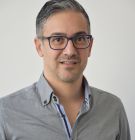Research
| INSPIRE Research Centre (2021-Now) | 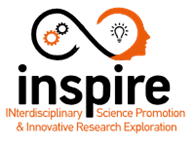 |
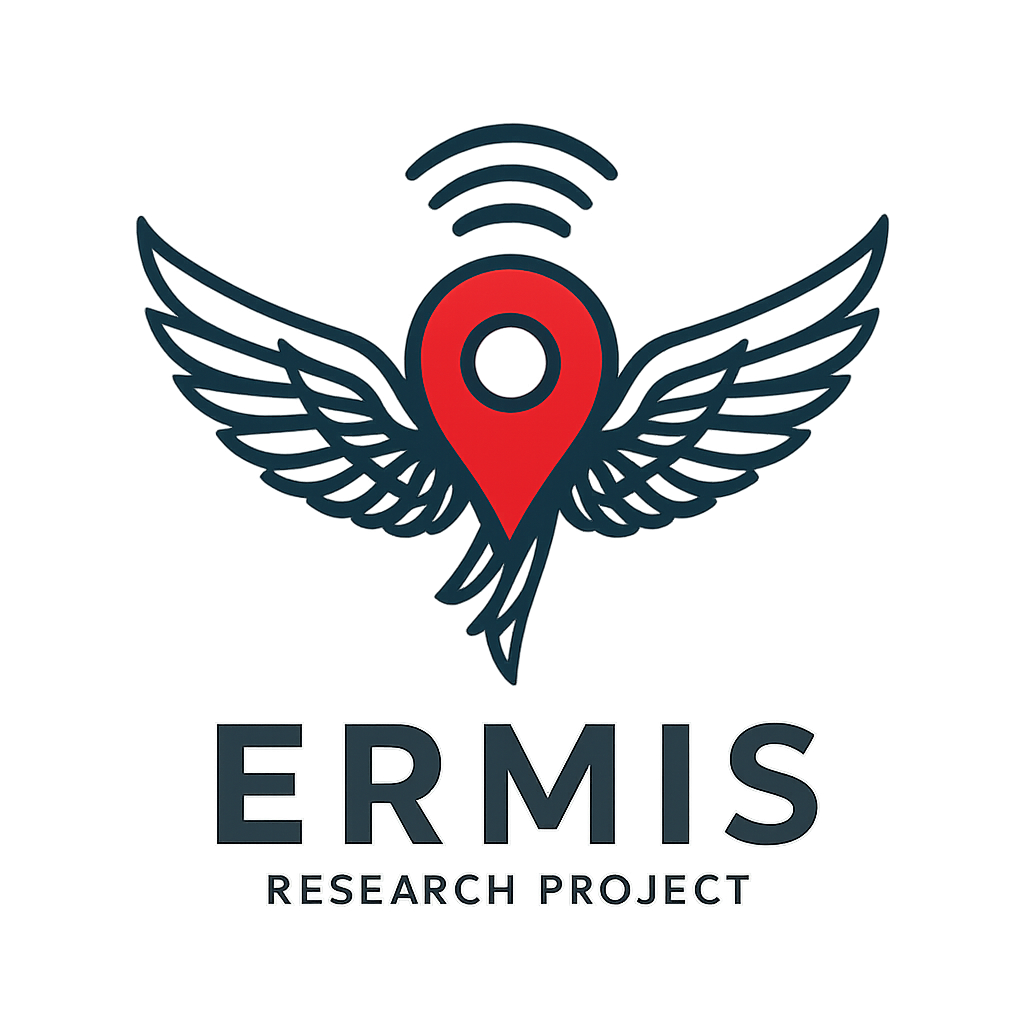 ERMIS: AdvancemEnts in 3D IndooR Positioning Methods and ApplicatIons for Next-Gen Communication Systems
ERMIS: AdvancemEnts in 3D IndooR Positioning Methods and ApplicatIons for Next-Gen Communication Systems
- Dates May 2025-April 2027 (24 months)
- Status Ongoing
- Role in the Project Coordinator/Principal Investigator
- Funding Body Cyprus Research and Innovation Foundation
- Funding Body EXCELLENCE/0524 (EXCELLENCE/0524/0218)
- Total Budget €249.930,32
- Funding Received €249.930,32
Description
ERMIS's vision is to advance the state of the art in 3D positioning by designing, developing, and validating new 3D positioning techniques utilising the most up-to-date wireless technologies and networks while demonstrating the positioning applicability and importance in various modern applications and systems. The choice of the technology and the positioning approach are typically a trade-off between accuracy, cost, complexity, technological maturity, and efficiency. For this reason, in ERMIS we consider various modern technologies and approaches to develop techniques covering all the possible choices an application developer would like to consider when implementing a location-based system or application. The project aims to advance the state of the art and develop prototypes that will be validated in the lab reaching a technology readiness level 4. To achieve this, the project includes the following Scientific and Technological Objectives: (1) Achieve sub-meter accuracy by designing, developing and evaluating 3D positioning, (2) Demonstrate the applicability and impact of accurate positioning in modern, smart applications in various domains such as (a) Localization of Jamming Attacks in IoT Networks, (b) Positioning-Aided Machine Learning-based Beam Management in Multi-Antenna and RIS (Reconfigurable Intelligent Surfaces)-enabled environments and (c) Auto calibration of positioning anchors for locating first responders in emergency applications., (3) Validate through measurements/simulations and assess the performance of the developed 3D positioning techniques and the studied position-based applications. To promote the openness of data and results ERMIS will make available all the data and algorithms developed in the project by releasing an Open Dataset and an open Positioning Toolbox.Partners
INSPIRE - coordinator, CYENS
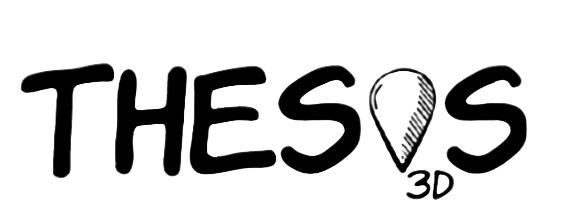 THESIS: THree dimEnSIonal millimeter-wave poSitioning
THESIS: THree dimEnSIonal millimeter-wave poSitioning
- Dates May 2023-January 2024 (9 months)
- Status Completed
- Role in the Project Coordinator/Principal Investigator
- Funding Body Cyprus Research and Innovation Foundation
- Funding Body CONCEPT/0722 – Proof of Concept
- Total Budget €39,952
- Funding Received €39,952
-

Description
THESIS vision is to demonstrate the ability and applicability of the millimetre-wave (mmWave) radio technology towards achieving high precision 3D positioning. mmWave technology is defining a new era in wireless communication by providing very wide bandwidths. It is currently being used in some Wi-Fi systems (e.g., IEEE802.11ad) and is planned to be used in 5G and beyond-5G communications in the near future as the it offers much more flexibility to use wider bandwidths and hence achieving much higher data rates and capacity. This very large availability of bandwidth, together with the use of massive phase array antennas that allow better time resolution and estimation of the signal phase could be used for achieving the desired high accuracy. Additionally, positioning research so far was mostly focused in 2D, however the 3D nature of these days’ smart applications is making the need for 3D positioning even more predominant. The project adopts a System Engineering approach to prove this concept/technology by developing prototypes and validating them experimentally in the lab. In this context the project aims to contribute towards the ongoing research efforts in this direction to achieve cm-level accuracy. The goal is to validate and assess the performance of the developed 3D positioning techniques and assess their performance against set KPIs as well as the applicability of mmWave for this purpose.Partners
INSPIRE - coordinator
 DEMETRA: 3D Precision Farming using Internet of Things and Unmanned Aerial Vehicles in Greenhouses
DEMETRA: 3D Precision Farming using Internet of Things and Unmanned Aerial Vehicles in Greenhouses
- Dates April 2023-December 2023 (9 months)
- Status Completed
- Role in the Project Researcher
- Funding Body Cyprus Research and Innovation Foundation
- Funding Framework CONCEPT/0722 – Proof of Concept
- Total Budget €39,902
- Funding Received €39,902
-

Description
The general objective of this project is the adaptation of existing technologies used in a precision agriculture (PA), into an indoor (greenhouse) prototype system which includes the use of both an unmanned ground and aerial vehicles (UGV and UAV). The term precision agriculture refers to the use of information technologies (IT) to help farmers manage the optimal growth of their crops thus ensuring profitability and sustainability. Furthermore, PA has also been known to help the environment by avoiding unnecessary spaying of pesticides as well as excessive use of water and fertilisers. The use of unmanned systems offers higher spatial resolution data compared to satellites. The real-time data of interest to the farmers and management tools/software includes soil properties such as moisture, compaction, salinity and nutrients (nitrogen (N), phosphorus (P) and potassium (K)), and crop monitoring which includes vegetation indexes such as Chlorophyll, Leaf Water, Ground Cover, Leaf Area, Normalised Difference Vegetation Index (NDVI), etc. UAVs have been used in PA for bird eye view, for insect identification using cameras and Lidars, and even actuators for autonomous spraying of pesticides, whereas the use of UGVs provides bottom-up capabilities identifying insects hiding under the leaves and for crop planting and harvesting. The innovation of this project is the UGV and UAV for indoor (greenhouse) PA applications where GPS signals are very weak or non-existent. In addition, this work will validate high-precision cm-level, 3D positioning techniques required for unmanned vehicle indoor localisation and navigationPartners
INSPIRE - coordinator
OpTec E-Charge - Optimized and Innovative Techniques for Energy-efficient operation of Electric Car Chargers
- Dates Dec. 2022 – June 2023 (24 months)
- Status Completed
- Role in the Project Researcher
- Funding Body Cyprus Research and Innovation Foundation
- Funding Framework Innovation Coupons
- Total Budget €5,000
- Funding Received €5,0000 -->
Description
Responsible research and innovation (RRI) is an approach that assesses potential implications and societal expectations related to research and innovation, aiming to foster the design of ethical, inclusive and sustainable research and innovation. Informed by RRI, the project focuses on empirical data collection to support the development of a set of guidelines for the implementation and use of smart environments that employ the technology of the Internet-of-Things (IoT)Partners
INSPIRE - coordinator, BlueSun Automation Ltd.
| UCLan Cyprus (2015-Now) |  |
 PREVENT– Prevention of natural disasters using deep technology for advanced HEI curricula
PREVENT– Prevention of natural disasters using deep technology for advanced HEI curricula
- Dates January. 2024 – December 2025 (24 Months)
- Status Ongoing
- Role in the Project WP2 Leader - Leading UCLan's participation
- Funding Body Erasmus+
- Funding Framework Cooperation partnerships in higher education KA220-HED
- Total Budget €400,000
- Funding Received €46,340
-



Description
The project aims to promote environmental sustainability and digital education among universities by raising awareness about environmental issues and climate change and how PLCs, robotics, and drones can eliminate the challenges related to natural disasters.Partners
Halmstad University (SWE) -coordinator , UCLan Cyprus (CY), Citizens in Power (CY), University of Patras (GR), University of West Macedonia (GR), Helix-Connect (RO), University of Vigo (ESP)
 HEIght– Higher Education Innovation Growth and Training: heightening sustainable innovation in our HEIs and societies (Phase 2)
HEIght– Higher Education Innovation Growth and Training: heightening sustainable innovation in our HEIs and societies (Phase 2)
- Dates January 2022 – June 2023 (18 Months)
- Status Completed
- Role in the Project Principlal Investigator - Leading UCLan's participation
- Funding Body European Institute of Innovation and Technology (EIT)
- Funding Framework Higher Education Innovation Growth and Training
- Total Budget €800,000
- Funding Received €121,000
-


Description
HEIght, is an initiative of a pan-European consortium of four forward-thinking higher education institutions and one actor from another side of the Knowledge Triangle leveraging existing innovation and entrepreneurial knowledge of all the partners to spur on growth of the sustainable innovation in our communities and in our institutions. HEIght delivers a vision of prosperous, inclusive and climate-resilient societies where food systems and other areas of human activity that are sustainable, trusted and healthy contribute to net zero carbon emission economies. Through training, designed and tailored to developing innovation and enterprise, these activities support the development of academic and non-academic staff and students. Through this project HEIs develop capacity in innovation and enterprise and a train-the-trainers method will ensure exponential growth of academic and non academic expertise and skills to support capacity building of innovative and entrepreneurial staff and students to effect great societal innovation.Partners
UCLan UK (UK)-coordinator , UCLan CY (Cyprus), MCAST (Malta), and Özyeğin University (Turkey) , National Centre for Entrepreneurship in Education- NCEE (UK)
 HEIght– Higher Education Innovation Growth and Training: heightening sustainable innovation in our HEIs and societies (Phase 1)
HEIght– Higher Education Innovation Growth and Training: heightening sustainable innovation in our HEIs and societies (Phase 1)
- Dates June 2021 – December 2021 (6 Months)
- Status Completed
- Role in the Project Principlal Investigator - Leading UCLan's participation
- Funding Body European Institute of Innovation and Technology (EIT)
- Funding Framework Higher Education Innovation Growth and Training
- Total Budget €400,000
- Funding Received €51,000
-


Description
HEIght, is an initiative of a pan-European consortium of four forward-thinking higher education institutions and one actor from another side of the Knowledge Triangle leveraging existing innovation and entrepreneurial knowledge of all the partners to spur on growth of the sustainable innovation in our communities and in our institutions. HEIght delivers a vision of prosperous, inclusive and climate-resilient societies where food systems and other areas of human activity that are sustainable, trusted and healthy contribute to net zero carbon emission economies. Through training, designed and tailored to developing innovation and enterprise, these activities support the development of academic and non-academic staff and students. Through this project HEIs develop capacity in innovation and enterprise and a train-the-trainers method will ensure exponential growth of academic and non academic expertise and skills to support capacity building of innovative and entrepreneurial staff and students to effect great societal innovation.Partners
UCLan UK (UK)-coordinator , UCLan CY (Cyprus), MCAST (Malta), and Özyeğin University (Turkey) , National Centre for Entrepreneurship in Education- NCEE (UK)
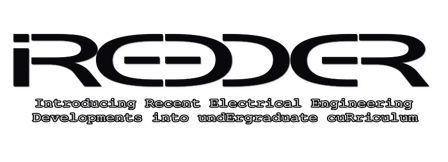 IREEDER – Introducing Recent Electrical Engineering Developments into undErgraduate cuRriculum
IREEDER – Introducing Recent Electrical Engineering Developments into undErgraduate cuRriculum
- Dates November 2019 – October 2022 (36 Months)
- Status Completed
- Role in the Project Principlal Investigator - Leading UCLan's participation
- Funding Body Erasmus+
- Funding Framework Capacity building (higher education)
- Total Budget €768,627
- Funding Received €42,557
-



Description
The main objective of the IREEDER project is to improve the capacity of higher education in Jordan, using state of the art technology and training staff on improving the quality of the materials taught by making best use of these technologies. The developed subjects will be oriented towards the recent technologies in electrical engineering including Renewable Energy, Internet of Things and Cybersecurity, in addition to their different applications. All these subjects will be in accordance with EU requirements. Specific objectives are:- Develop, integrate, accredit and evaluate subjects with appropriate laboratories' components in the fields of RE, IoT and CS taught by universities in Jordan and brought into line with the EU requirements. These subjects will be developed and taught in English language.
- Engage faculty members in the development of interactive instruction techniques for lectures, laboratory training, and sharing experiences with EU partner universities.
- Develop and implement subject content using Virtual Learning Environment (VLE) delivery and remote labs.
- Extend services and training in collaboration with the industry firms and local communities.
- Improve the human capacity of Jordanian universities by providing training and upgrading opportunities in the EU for aspiring young and women academic staff.
Partners
Al-Hussein Bin Talal University (Jordan) - coordinator, Mutah University (Jordan), Tafila Technical University (Jordan), Princess Sumaya University for Technology (Jordan), Philadelphia University (Jordan), Isra University (Jordan), Universita degli Studi di Trento (Italy), University of Central Lancashire Cyprus (Cyprus), Universidade De Aveiro (Portugal), The University of Patras (Greece), Universidade De Vigo (Spain), Middle East Technical University (Turkey)
RSE – Responsible Smart Environments
- Dates Jan 2019 – Dec 2020 (24 Months)
- Status Completed
- Role in the Project Researcher
- Funding Body UCLan UK: Centre for Sustainable Transitions</a>
- Funding Framework Internal Funding
- Total Budget €5,663
- Funding Received €5,663
Description
Responsible research and innovation (RRI) is an approach that assesses potential implications and societal expectations related to research and innovation, aiming to foster the design of ethical, inclusive and sustainable research and innovation. Informed by RRI, the project focuses on empirical data collection to support the development of a set of guidelines for the implementation and use of smart environments that employ the technology of the Internet-of-Things (IoT)Partners
UCLan Cyprus, UCLan UK
| Sigint Solutions Ltd (2007-2015) |  |
TruNet – 3D Wireless Network Planning Simulator
- Dates January 2013 - December 2014 (24 Months)
- Status Completed
- Role in the Project Project Manager/Principal Investigator
- Funding BodyMinistry of Energy, Commerce, Trade and Tourism, Cyprus
- Funding Body Industrial Funding Schemes 2007-2013
- Total Budget €130,857
- Funding Received €130,857
Description
Design, Implementation and commercialization of a 3D Wireless Network Simulator. TruNet, is a 3D wireless network planning simulator based on a custom-developed Electromagnetic engine developed in-house.The product was launched as a company commercial product internationally in the first half of 2015.Partners
Sigint Solutions Ltd - coordinator
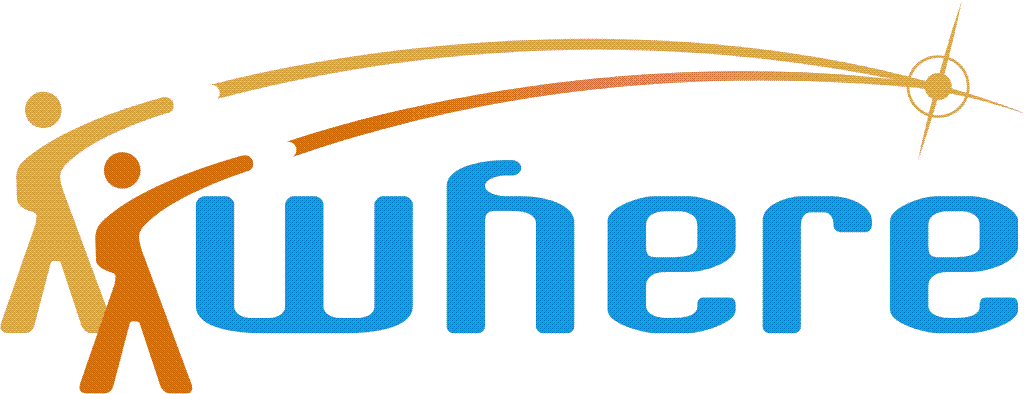 WHERE-2 – Wireless Hybrid Enhanced Radio Estimators 2
WHERE-2 – Wireless Hybrid Enhanced Radio Estimators 2
- Dates July 2010 – June 2013 (36 Months)
- Status Completed
- Role in the Project Researcher/Leader of the task T2.2 that investigated enhancements in localization precision through the development of advanced positioning algorithms by fusing together radio with non-radio context such as inertial sensor information and/or position constraints imposed by maps etc. Also lead specific tasks of the demonstration and proof of concept.
- Funding Body European Commision
- Funding Framework FP7 ICT 2009
- Total Budget €7,450,000
- Funding Received €271,125
-

Description
The availability of position information plays an increasing role in wireless communications networks already today and will be an integral part of future systems. They inherently can offer the ability for stand-alone positioning especially in situations where conventional satellite based positioning systems such as GPS fail (eg indoor). In this framework, positioning information is an important enabler either for location and context-aware services or even to improve the communications system itself. The WHERE2 project is a successor of the WHERE project and addresses the combination of positioning and communications in order to exploit synergies and to enhance the efficiency of future wireless communications systems. The key objective of WHERE2 is to assess the fundamental synergies between the two worlds of heterogeneous cooperative positioning and communications in the real world under realistic constraints. The estimation of the position of mobile terminals (MTs) is the main goal in WHERE2. The positioning algorithms combine measurements from heterogeneous infrastructure and complement them by cooperative measurements between MTs, additional information from inertial sensors, and context information. Based on the performance of the geo-aided positioning strategies (in the sense of accuracy, complexity, overhead of signaling, reliability of the provided information, etc.) the impact on coordinated, cooperative, and cognitive networks is assessed. This is done under realistic scenarios and system parameters following on-going standardization processes. A joint and integrated demonstration using multiple hardware platforms provides a verification of the performance of dedicated cooperative algorithms. All the tasks in WHERE2 are covered by different work packages, which are in close interaction to ensure an integral investigation of cooperative positioning and communications.Partners
German Aerospace Center (DLR) - coordinator, Sigint Solutions Ltd. (CY), Institute of Communications and Navigation (DE), Aalborg University (DN), Advanced Communications Research&Development S.A. (ES), Commissariat à L’Energie Atomique – LETI (FR), Institut Eurécom (FR), Siradel (FR), Université de Rennes 1 (FR), Instituto Telecomunicações (PT), Mitsubishi Electric ITE (FR), University of Surrey (UK), Universidad Politécnica de Madrid (SP), University of Alberta (CN), City University of Hong Kong (HK), Telefonica I+D (SP), OTE S.A (GR), University of Athens (GR), Portucal Telecom Inovacao S.A (PT)
 C2Power – Cognitive Radio and Cooperative strategies for power saving in multi-standard wireless devices
C2Power – Cognitive Radio and Cooperative strategies for power saving in multi-standard wireless devices
- Dates Dates: January 2010 – December 2012 (36 Months)
- Status Completed
- Role in the Project Work Package Leader and Principal Investigator in the Work Package (WP6) that investigated, implemented and demonstrated novel context-aware energy efficient vertical and horizontal handover algorithms through a custom-developed test-bed.
- Funding Body European Commision
- Funding Framework FP7-ICT-2009-4
- Total Budget €3,450,000
- Funding Received €342,510
-

Description
C2POWER main objective was to research, develop and demonstrate energy saving technologies for multi-standard wireless mobile devices, exploiting the combination of cognitive radio and cooperative strategies while still enabling the required performance in terms of data rate and QoS to support active applications.Partners
Instituto Telecomunicações (PT) - coordinator, Sigint Solutions Ltd, Commissariat à L’Energie Atomique – LETI (FR), Portucal Telecom Inovacao S.A (PT), University of Surrey (UK), Center for Research and Telecomm. Experimentation for Networked Communities CREATE-NET (IT), Wroclawskie Centrum Badan EIT+ SP ZO.O (PL), EADS Defence and Security Systems (FR), Veebeem (UK), LANTIQ Deutschland GmbH (DE)
 CogEU – COGnitive radio systems for efficient sharing of TV white spaces in EUropean contex
CogEU – COGnitive radio systems for efficient sharing of TV white spaces in EUropean contex
- Dates January 2010 – December 2012 (36 Months)
- Status Completed
- Role in the Project Work Package (WP5) Leader and Principal Investigator in the WP that developed an experimental cognitive radio emulator to evaluate the interference between DVB-T systems and systems that are expected to use TV White Spaces (TVWS).
- Funding Body European Commision
- Funding Framework FP7-ICT-2009-1.1
- Total Budget €5,100,000
- Funding Received €342,510
-

Description
COGEU was a composite of technical, business, and regulatory/policy domains, with the objective of taking advantage of the TV digital switch-over (or analogue switch-off) by developing cognitive radio systems that leverage the favourable propagation characteristics of the TVWS through the introduction and promotion of real-time secondary spectrum trading and the creation of new spectrum commons regime.Partners
Instituto Telecomunicações (PT) - coordinator Sigint Solutions Ltd (CY), Thales (FR), Portucal Telecom Inovacao S.A (PT), Trinity College (IR), University of Aegean (GR), Poznan University of Technology (PL), Institut für Rundfunktechnik (DE), Rohde & Schwarz (DE), Towercom A. S (SLO)
LOCME – Localization of Mobile Terminals
- Dates October 2011 - September 2013 (24 Months)
- Status Completed
- Role in the Project Task leader and Principal Investigator in the task that developed advanced fingerprinting positioning algorithms. Also coordinated the works for the development of a Mobile Android Application for the demonstration of the proof of concept.
- Funding Body Cyprus Research and Innovation Foundation
- Funding Framework ΤΠΕ/ΕΠΙΚΟΙ/0609(ΒΙΕ)
- Total Budget €164,736
- Funding Received €74,026
Description
To investigate and develop advanced positioning algorithms by utilizing the building geometry extracted from satellite imagery.Partners
Sigint Solutions (CY) , Open University of Cyprus (CY), University of Cyprus (CY)
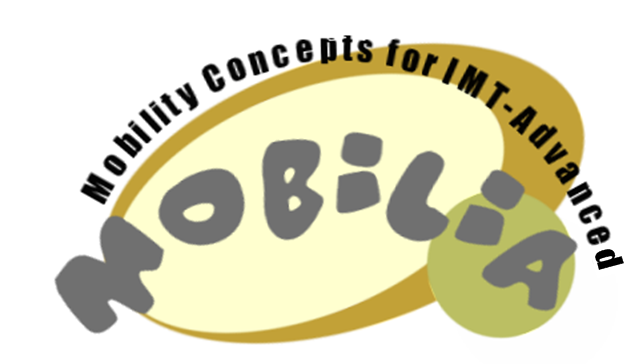 MOBILIA – Mobility concepts for IMT-Advanced. Networks
MOBILIA – Mobility concepts for IMT-Advanced. Networks
- Dates December 2008– December 2010 (24 Months)
- Status Completed
- Role in the Project Coordinator at a National level (local consortium). At an international level, I was the Task Leader and Principal Investigator of a task that investigated cooperative relaying and capacity improvements by utilizing Distributed MIMO technologies. A MIMO capacity module has been developed as add-on functionality to Sigint’s simulator (TruNET)
- Funding Body Cyprus Research and Innovation Foundation
- Funding Framework EUREKA CELTIC
- Total Budget €1,900,000
- Funding Received €74,026
Description
MOBILIA targeted ITU IMT-advanced requirements for future wireless systems, i.e. peak data rates of 100 Mbps for mobile applications and 1 Gbps for low mobility. The IMT-advanced vision of future network as being formed of interworking access systems was also considered. A derived target was to obtain an increased aggregate throughput/user satisfaction vs. existing systems.Partners
Instituto de Telecommunicacoes (PT) , TTI Telecom (ES), CTTC (ES), Creativ IT (ES), TST Sistemas (ES), Universidad Cantabria (ES), Wavecom (PT), Sigint Solutions Ltd (CY)
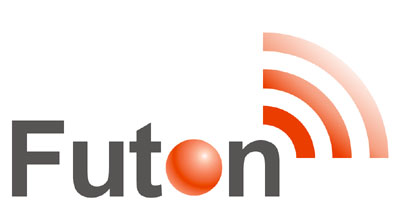 FUTON - Fibre Optic Networks for Distributed, Extensible HeterogeneousRadio Architectures and Service provisioning
FUTON - Fibre Optic Networks for Distributed, Extensible HeterogeneousRadio Architectures and Service provisioning
- Dates January 2008 – Sep 2010 (30 Months)
- Status Completed
- Role in the Project Work Package Leader of WP4 which designed and implemented a middleware platform based on Mobile-IP principles which performs vertical handovers between heterogeneous radio technologies in order to demonstrate seamless communication between heterogeneous networks.
- Funding Body European Commission
- Funding Framework FP7-ICT-2007
- Total Budget €9,850,000
- Funding Received €349,120
-

Description
FUTON aimed to research, develop and validate a flexible architecture for wireless systems based on the joint processing of the radio signals from distinct remote antenna units and supported by a transparent fibre infrastructure. This architecture enables the high bit rates targeted in the broadband component of future wireless systems and provides a framework for the integration of heterogeneous wireless systems.Partners
Nokia Siemens Networks (PT) , Instituto de Telecomunicações (PT), Alcatel - Thales III - V Labs (FR), CEA-LIST (FR), Portugal Telecom Inovação (PT), VIVO (BR), OTE Research (GR), ACORDE (ES), Wavecom (PT), Sigint Solutions Ltd (CY), University of Kent (GB), University of Patras (GR), Technical University of Dresden (DE), Valtion teknillinen tutkimuskeskus (FI), National Institute of Information and Communications Technology (KO).
 WHERE - Wireless Hybrid Enhanced Radio Estimators
WHERE - Wireless Hybrid Enhanced Radio Estimators
- Dates January 2008 – December 2010 (36 Months)
- Status Completed
- Role in the Project Task Leader and Principal Investigator of the task that produced radio propagation predictions through Ray tracing, feeding this data into advanced radio location estimators. Also involved in the investigation of the accuracy of fingerprinting positioning when Ray tracing is used to calculate the fingerprinting maps, considering various uncertainties in the definition of the environment to be simulated.
- Funding Body European Commission
- Funding Framework FP7-ICT-2007
- Total Budget €5,500,000
- Funding Received €179,630
Description
The main objective of WHERE was to combine wireless communications and navigation for the benefit of the ubiquitous access for a future mobile radio system. The impact is manifold, such as real time localization knowledge in B3G/4G systems allows to increase efficiency in various ways.Partners
German Aerospace Center (DE) , Aalborg University (DN), Advanced Communications Research&Development S.A. (ES), Commissariat à L’Energie Atomique – LETI (FR), Institut Eurécom (FR), Siradel (FR), Université de Rennes 1 (FR), Instituto Telecomunicações (PT), Mitsubishi Electric ITE (FR), Sigint Solutions Ltd. (CY), University of Surrey (UK), Universidad Politécnica de Madrid (ES), University of Alberta (CA), City University of Hong Kong (HK)
4GOpen -Optimization and Convergence for Next Generation Networks
- Dates May 2009 – October 2011 (30 Months)
- Status Completed
- Role in the Project Research Associate. Contributed in the integration of a physical layer (channel prediction) with a link layer simulator from Wavecom.
- Funding Body Cyprus Research and Innovation Foundation
- Funding Framework EUREKA-EUROSTARS
- Funding Received €205,880
Description
To interconnect two simulators working on different communication layers and to compare the output with real measurements. Simulators were geographically separated and have been interconnected through TCP/IP.Partners
Sigint Solutions (CY) -coordinator , Wavecom (PT)
ASPIDA - Security in Sensor Network
- Dates December 2006 – December 2010 (48 Months)
- Status Completed
- Role in the Project Project Coordinator
- Funding Body Cyprus Research and Innovation Foundation
- Funding Framework Research for new Researchers (ΠΕΝΕΚ)
- Total Budget 214,412
- Funding Received 115,458
Description
To design and develop a prototype of a security layer that will offer security services to sensor nodesPartners
Sigint Solutions (CY) -coordinator , University of Cyprus, University of Piraeus
| University of Surrey (2004-2007) | 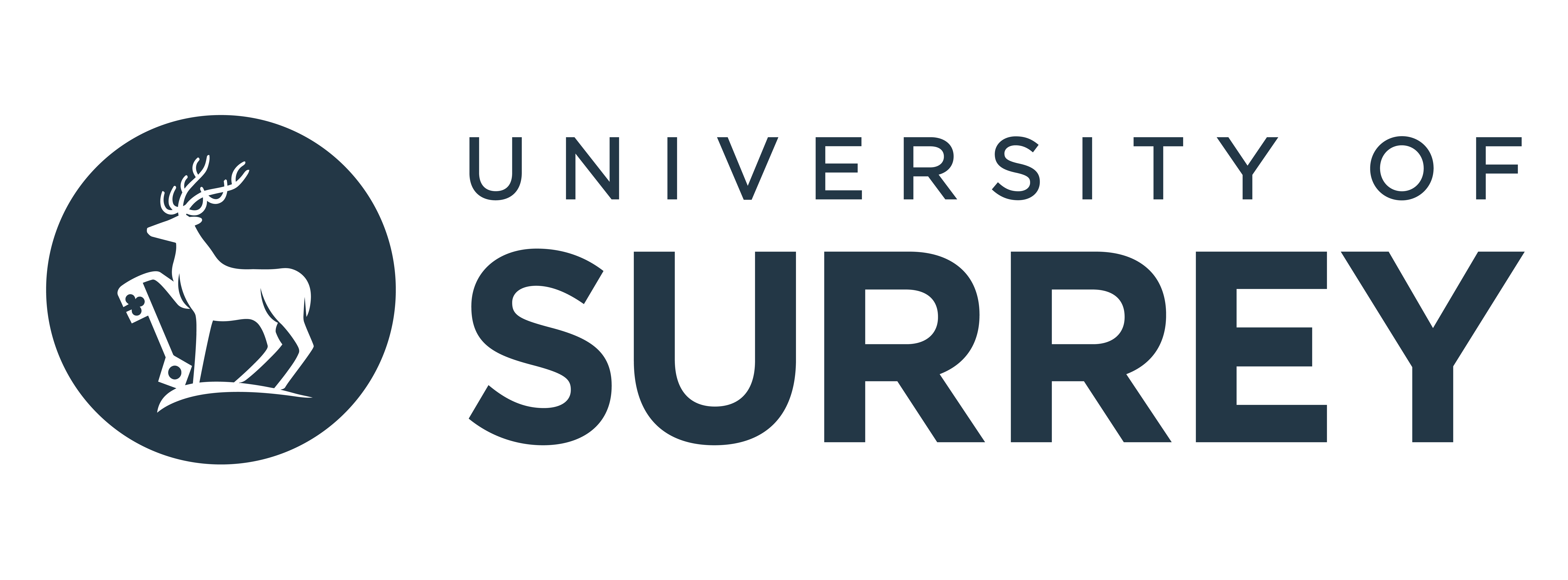 |
Optimising Radio Tactical Positions
- Status Completed
- Role in the Project Researcher
- Funding Body Defence Science and Technology Laboratory (DSTL) – British Ministry of Defence
Electromagnetic Propagation in Complex Aircraft Environments
- Status Completed
- Role in the Project Research Associate. Participated to the radio measurement campaigns in emulated aircraft engine environments to evaluate transmission losses through the aircraft body.
- Funding Body Rolls-Royce ltd.
